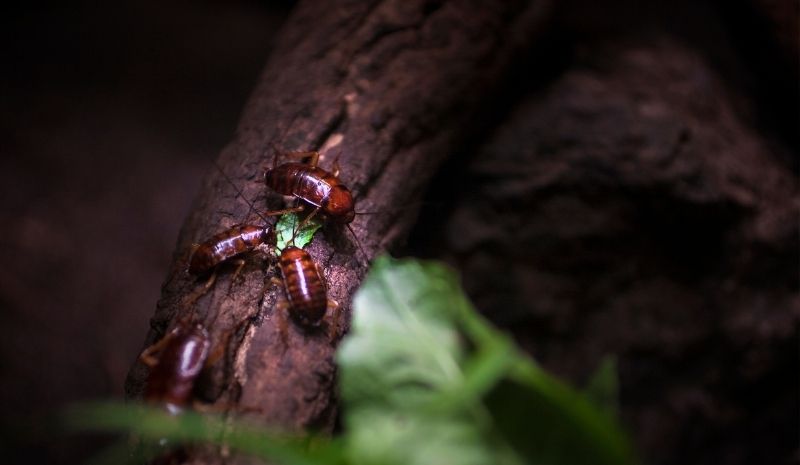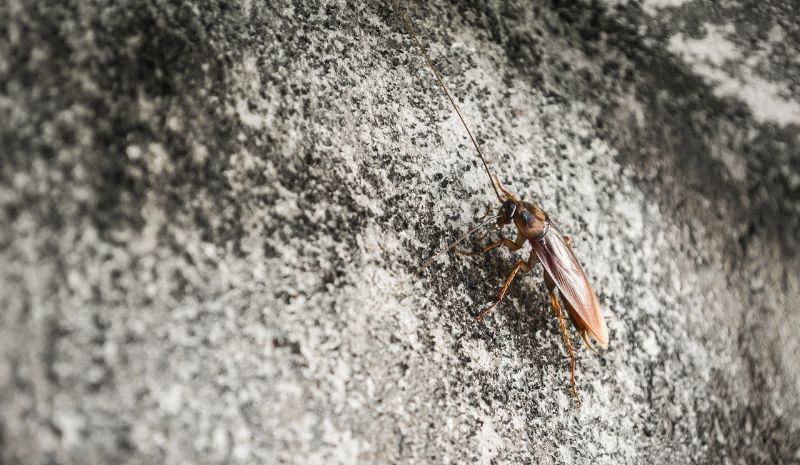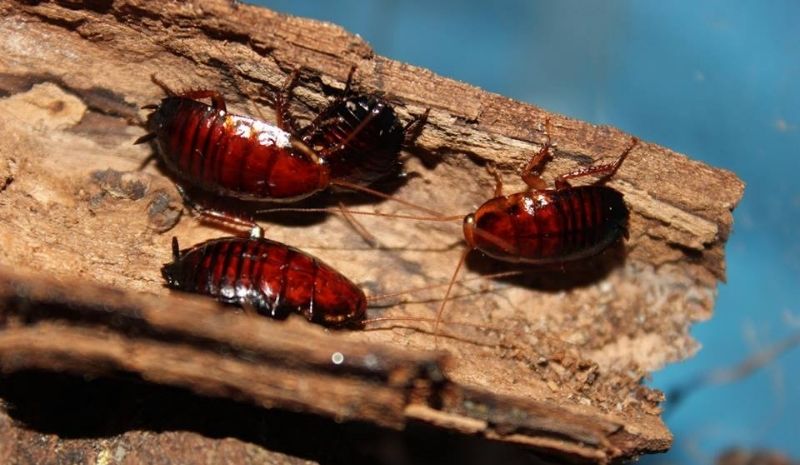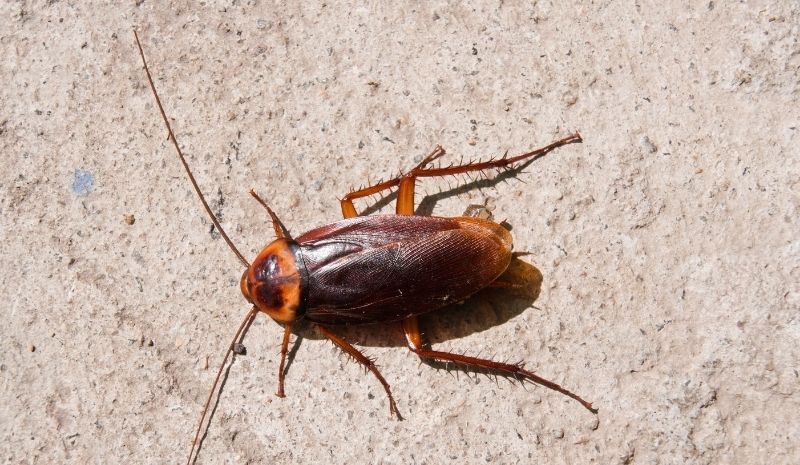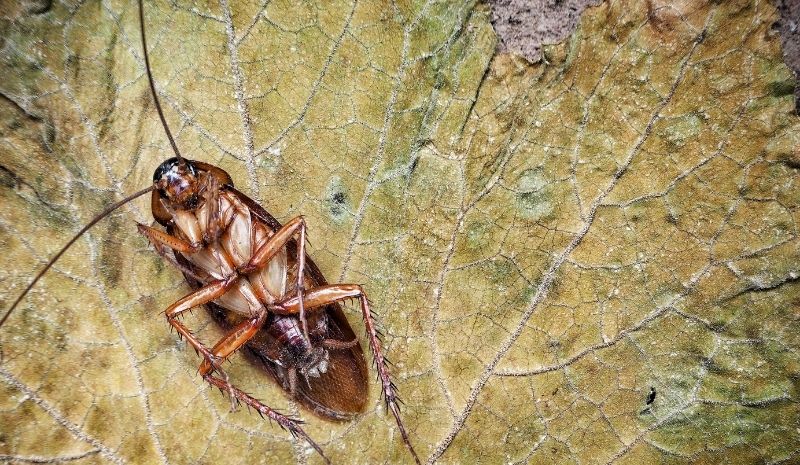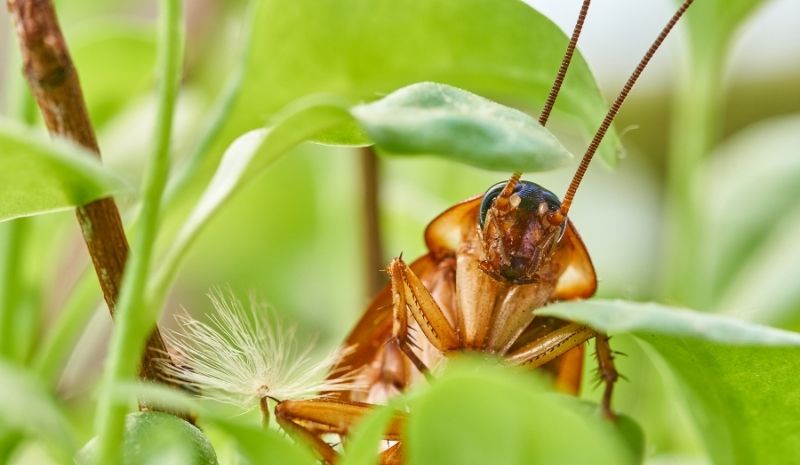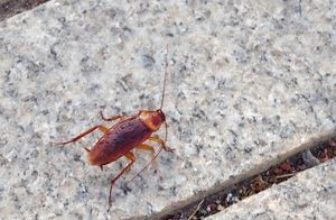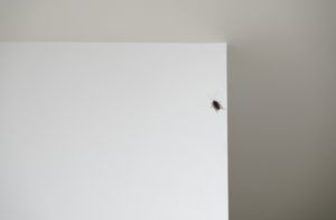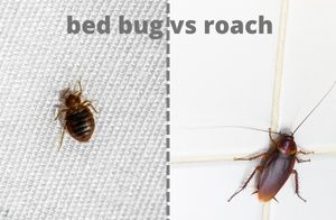If the thought of seeing roaches on the porch at night makes you shiver, I have some good news to comfort you. Luckily, not all cockroach species live at home, which means some tiny invaders won’t pass your entrance threshold. They prefer to settle in filth, debris, and dirt outside. So the fact you have seen one doesn’t mean the pest will rambler through your house’s surfaces and walls.
However, by googling “cockroaches outside my house at night,” you already admit there is a bug problem. Let’s solve it together! Follow the guide below and understand how to eliminate these pests.
Guide on Yard Roaches
If you want it to be the first and last time you meet roaches outdoors, make sure to:
- Seal their entry spots.
- Eliminate water and food sources.
- Make their hiding locations inconvenient for breeding.
- Apply baits and insecticidal sprays to kill roaches.
Why do I have roaches in my yard at night?
Outdoor roaches are not something unique: They live across the entire territory of the US. Their main function in nature is decomposing since they feed upon dead and withering plant matter, as well as animal corpses.
This type of roaches poses certain health dangers to people such as transmitting various diseases and provoking allergic reactions. Salmonella, asthma, and skin disorders are not the entire list of what you can face if you leave the outdoor infestation to its fate.
To step out of the risk category, let’s look at the main reasons these pests might have chosen your yard as a shelter. Here are 3 major explanations for this.
1. You haven’t cleaned your yard in a while
Dirt and dampness make a landing strip for roaches. These pests don’t need your kitchen food to thrive; they can easily survive by consuming various materials such as rotting garbage, grease, hair, droppings of older roaches, etc. In your yard, they can spice up their diet with decaying pieces of wood, compost, foliage, and even the garbage in the trash cans.
Dampness also makes a yard attractive to these insects. The damper your territory, the better it is for them. The pests choose damp spots for building their nests. Thus you have to ensure not to overwater your yard. If you have poor water drainage systems, you have to repair or replace them as soon as possible. Wet potholes can also exaggerate the problem.
By neglecting your yard care and leaving it dirty, damp, and poorly managed, you create an ideal breeding ground for cockroaches. They will surely invite other guests such as ants and termites to such favorable conditions.
2. Your yard has perfect hiding places for roaches
Your yard doesn’t necessarily have to be abandoned to seem eye-catchy to these pests. Outdoor roaches usually hide in cracks and gaps on the walls, underneath stones, in the catch basins, on wood piles, and under the plant pots. The reason is these hiding places are usually damp and moist during the daytime. It makes them a presidential suite for the roaches.
3. Roaches are nocturnal creatures
The last reason you might be mesmerized by a cockroach strutting across your patio is that these insects are primarily active at night. When dusk comes, they leave their shelters and forage around in search of food and new territories to occupy.
What cockroaches live in the yard
When it comes to types of roaches that can occupy your yard, there are 2 of them: Wood cockroaches and Asian cockroaches known as lawn roaches. However, it doesn’t mean other roach types will avoid your yard.
Many types of outdoor roaches also can search for a way to enter your home when the weather outside is especially dry and hot. Let’s examine the 6 main roach species that can invade your territory.
1. American roach
It is the largest of the roach species that inhabits the whole territory of the United States, often called palmetto bugs. They are usually around 2 inches long and have a reddish-brown shade and a yellow figure-eight spot on their heads. These pests settle both outside and inside houses and prefer warm and humid conditions for breeding.
2. Florida woods cockroach
This type of pest thrives outdoors and can’t live in an indoor environment for a long time. Their size ranges from nearly 3/4 inches to 1 1/4 inches in length, and the coloring varies from tannish to light brown. Examine your yard for damp areas such as mulch piles, woodpiles, rotten logs, etc.: These roaches tend to hide there.
3. Smoky-brown cockroach
This insect type is entirely dark brown or mahogany-colored, and it has no yellow pattern on the head. Its average size is around 1-1/4 inches long, and it can fly. Although it prefers to settle in warm locations, this species can also inhabit northern locales. These pests need water every three to four days, so you can find them outdoors in damp, warm, and dark areas.
4. Oriental cockroach
This type is mainly found in northern climates of the US. It is frequently mistaken for water bugs since they usually enter houses through water drains or beetles because of their thick and round shape. Oriental roaches’ coloring varies from dark brown to almost black. They are typically 1 1/4 inches in length and don’t fly. These species are considered one of the dirtiest since they emit a foul odor.
5. Brown-banded cockroach
These roaches are typically small, approximately 5/8 inches long, and people often mistake them for German cockroaches. Males are dark brown, and females feature reddish-brown to dark brown coloring. Both sexes have two yellow bands crossing their bodies.
The males can fly. This roach’s favorite environment is warm outdoor spots such as pet feeding stations, electrical equipment, window frames, and the like.
6. Turkestan cockroach
These insects are nearly 1 inch long; the females feature the cream-colored markings on their bodies, and the males have tannish-yellow wings with creamy edges. They usually choose potted plants, compost piles, leaf debris, water meter boxes, cracks, and crevices for hiding.
How to get roaches out of your yard
When it comes to pest control, experts prefer being safe to sorry. If you can apply preventive measures, don’t hesitate to do it in advance. However, in case you already have a six-leg creature in your yard, no need to fall into despair. The night will end, and so will the roaches.
Learn how you can get rid of them and build your roach control strategy with my step-by-step guide below. I have used these methods when I had to get rid of the roaches outside my house, so all of them are proven in practice.
Step 1: Prevent them from entering your home
First, you should do your best to prevent roaches from finding a way to enter your house. Here is when prevention and sanitation are vital. Always keep the entrance doors and windows tightly shut. Repair any openings in window screens, around the pipes, doors, and even electrical outlets.
Step 2: Cut off access to water
Holes in trees and old tires can serve as outdoor water collection areas, so you need to eliminate them. Look for any old pans and cans lying in your yard and remove them. Make sure you don’t overwater your plants and repair leaking plumbing pipes or hoses. If you have a pet, don’t forget to empty its outdoor water dish each day.
Step 3: Keep the food sources away from roaches
The measures you can take include keeping compost piles sealed and disposing of outdoor trash correctly. Don’t leave garbage lying around your yard, and close your trash cans tightly with lids. If you have a dog or a cat, empty their outdoor food bowls daily.
Step 4: Make their shelters inconvenient
An adult cockroach can penetrate spaces nearly 1/16th of an inch in size. Thus it is essential to seal all cracks and crevices around the outside of your house. Place any organic mulch pulled back from your house walls by nearly 1 foot because roaches thrive and multiply in the organic matter.
Trim bushes and trees around your house so that they don’t touch the walls or roof. Apply cement to any holes in trees to make them unfavorable for roaches to breed.
Step 5: Use chemicals for elimination
It is high time to use chemicals to deal with these nasty pests. Though the market flourishes with numerous options, I find baits and insecticidal sprays the most effective:
- Baits come in different forms, but granules and gels work best outdoors. If you use cockroach bait, never apply a spray insecticide in the same location. It will make bait useless: Any cockroach type will be repelled from entering this spot. Place granule products around your house perimeter, in flower beds, and in mulched areas. Gel baits should be applied to any crevices or cracks in foundations, outdoor walls, around doors, and windows;
- Insecticidal sprays are also considered to be effective, but you shouldn’t combine them with baits. Always follow the manufacturer’s recommendations and repeat applications. Use sprays on any cracks or crevices where you suspect roaches to be hiding. Spray any entry points the pests can use to penetrate your house. Ensure no children and pets have access to the treated areas. Wear protective gloves and wash your hands after each application session.
FAQ About Cockroaches in Yard
It’s not pleasant to observe roaches crawling on your grass lawn, mulch, and porch at night. Read my answers to the most common questions on the Web to know what to do if you see a queue of germ-ridden guests behind your front door.
Should I be worried if I see a cockroach outside my house?
Though garden roaches are unlikely to get inside your home, they still pose health hazards. They can provoke allergic reactions in some people and are the carriers of certain diseases such as Salmonella. I advise you to cope with an outdoor roach problem before it swifts indoors.
Is it normal to have roaches outside?
If you wonder: “Do roaches live outside?” — yes, they do. However, I wouldn’t recommend perceiving this natural fact as normal. You risk your health by sharing the yard with roaches. Besides, some types can move indoors, for example, American roaches.
Where do roaches nest outside?
Roaches nest in secluded spaces near water and food sources. Cracks, crevices, organic matter, mulch piles, decaying plant debris, steam tunnels, sewer systems, wood piles, and pet feeding areas are on the list of their favorite breeding locations.
Where do cockroaches go during the day?
Have you ever asked yourself: “If cockroaches are outside my house at night, why don’t I see them in the daytime?” The pests surely don’t dissolve in the air. They typically hide in dark, moist areas around your house and come out at night for food.
Avada Kedavra, Grass Roaches!
Any single outside roach is a sign these pests successfully thrive on your territory. If privacy means something to you, and you don’t want to share your living place with tiny, filthy beggars, it’s time to say goodbye to them.
Follow the guidelines above to identify the species you are dealing with, apply preventive measures to protect your house territory, and use baits or insecticidal sprays to get rid of the existing roaches.
Where did you notice an unwelcome guest at night? Have you managed to determine the roach type? Please, leave your responses below.
Also read:
- How to Get Rid of Roaches in Walls: Complete Roach Control & Prevention Guide
- How to Get Rid of Roaches in Car: No Passengers Allowed
- How to Keep Cockroaches Away at Night: Your Bed Is Your Fortress
- How to Prevent Cockroaches in Bedroom: Protect Your Sleep
- What Smells Do Cockroaches Hate? Using Aroma as a Weapon
- Does Coffee Have Roaches or Other Insects
- Where Do Roaches Come From in the Bathroom?
References
- Transmitting various diseases (Better Health Channel):
https://www.betterhealth.vic.gov.au/health/healthyliving/cockroaches - Roaches usually hide (Department of Health, OF NEW YORK STATE):
https://www.health.ny.gov/publications/3202/ - Types of roaches (the Illinois Department of Public Health, Division of Environmental Health):
https://dph.illinois.gov/topics-services/environmental-health-protection/structural-pest-control/cockroaches.html - Roach control strategy (Cockroach Manual):
https://lancaster.unl.edu/pest/roach/roach5Eng.pdf
Contents
Why You Should Trust Pest Control Hacks?
We know that pests are nasty neighbors, and it can take months to eliminate them without the right approach. Our experts use their own experience to compile articles and guides that are introductory and informative. Our authors’ opinions are independent and based on the results of practical testing of pest control tools. We do not notify manufacturers of testing of their products and do not receive payment from them for posting their items. Also, our texts are never submitted to company representatives for proofreading before placement. On the site, you will find exclusively objective ratings and reviews.

